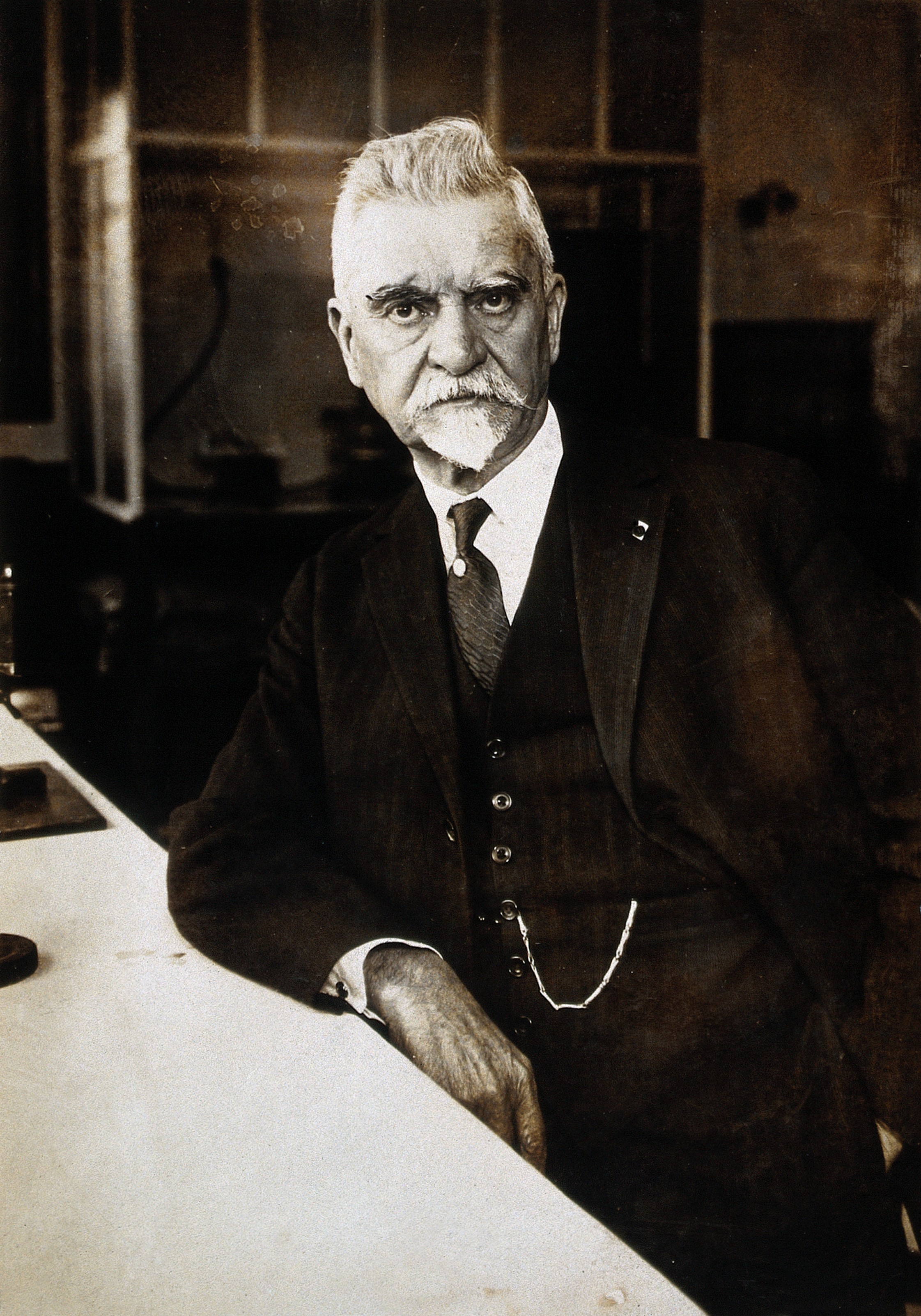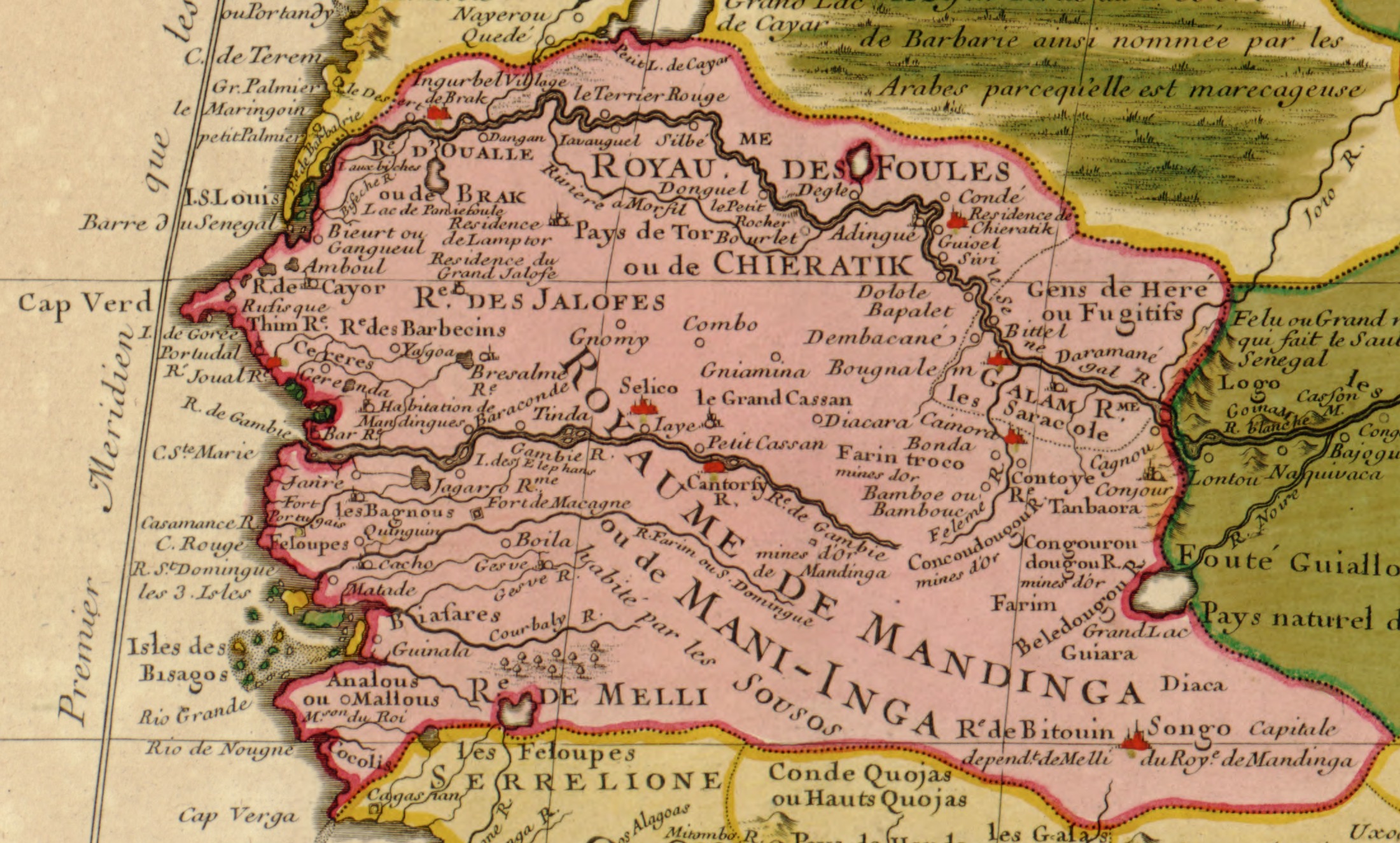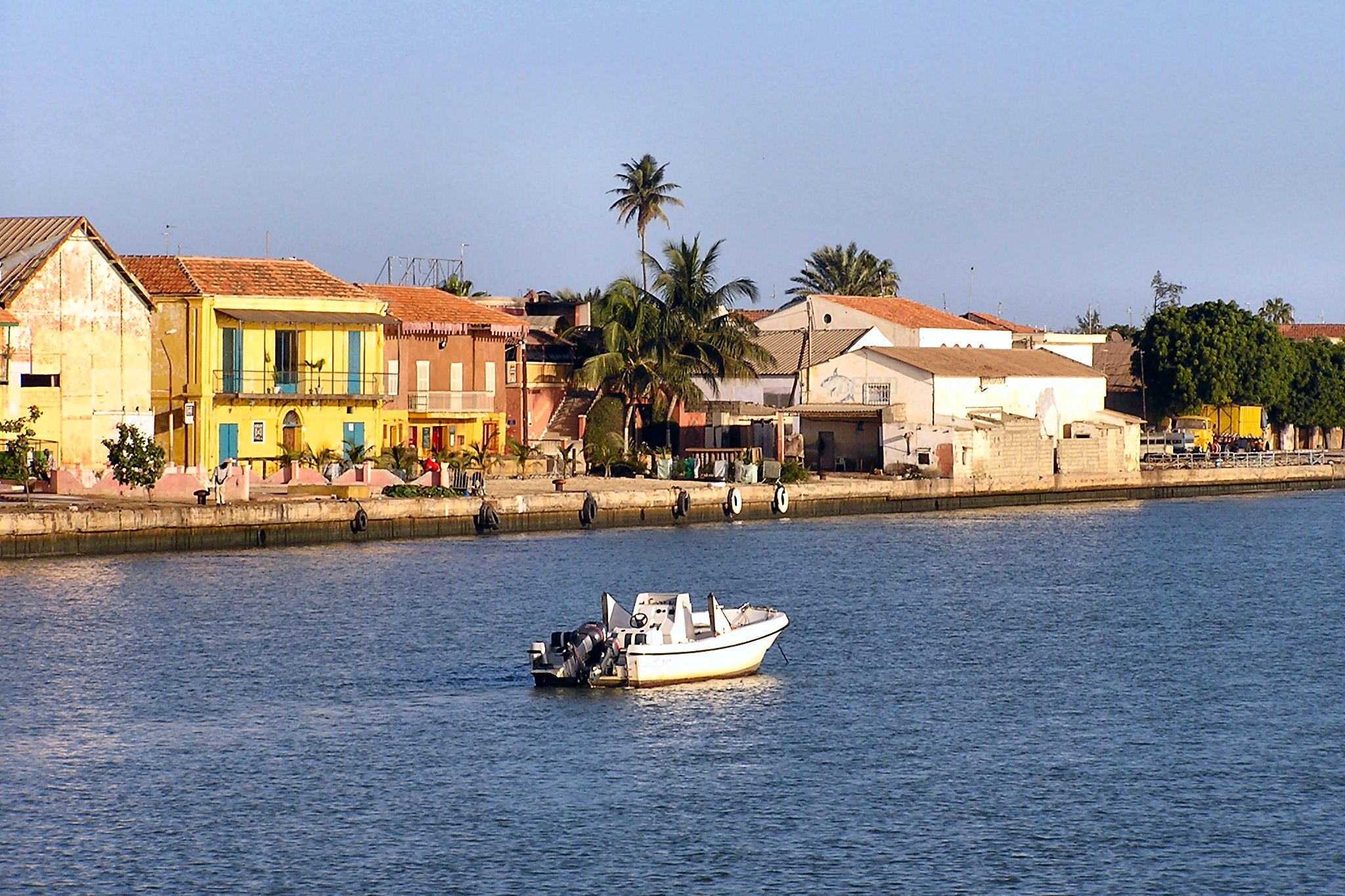|
Pasteur Institute Of Dakar
The Institut Pasteur de Dakar (IPD) is a biomedical research center in Dakar, Senegal. The institute is part of the world-wide Pasteur Institute, which co-manages the IPD with the Senegalese government. Description In 1896 Émile Marchoux, a French physician and microbiologist who had studied under Louis Pasteur, founded a microbiological laboratory in Saint-Louis, then the capital of French Colonial Senegal. In 1913 the facility was moved to Dakar which had become the new capital in 1902. After French Colonial Senegal, the institute continued its operations into the era of Senegalese independence. The IPD is primarily focused on the study of microbiology and virology, specifically arbovirus; yellow fever was first isolated in Africa at the institute, and the first vaccine for the disease was discovered at the IPD. Following the outbreak and spread of COVID-19, the institute began to work on developing a cost-effective means of testing for coronavirus. Furthermore, in July 2 ... [...More Info...] [...Related Items...] OR: [Wikipedia] [Google] [Baidu] |
Émile Marchoux
Émile Marchoux (24 March 1862 - 19 August 1943) was a French physician and biologist born in Saint-Amant-de-Boixe, Charente. He studied medicine in Paris, defending his doctorate with a dissertation titled ''Histoire des épidémies de fièvre typhoïde dans les troupes de marine à Lorient'' (1887). From 1888 to 1900 he served as a naval doctor in Dahomey, afterwards being responsible for vaccination services in Cochinchina, Cochin (1890–93). In 1893 he began taking microbiology classes at the Pasteur Institute in Paris, where he studied the anthrax bacterium in the laboratory of Emile Roux (1853-1933). From 1895 he was based in Saint-Louis, Senegal, where he established a laboratory of microbiology, subsequently dealing with an epidemic involving amoebic dysentery. During his stay in Senegal he published an influential account of malaria that was published in the ''Annales de l'Institut Pasteur'' (1897). From 1901 to 1905, Marchoux worked with Paul-Louis Simond (1858-1947) a ... [...More Info...] [...Related Items...] OR: [Wikipedia] [Google] [Baidu] |
Virology
Virology is the Scientific method, scientific study of biological viruses. It is a subfield of microbiology that focuses on their detection, structure, classification and evolution, their methods of infection and exploitation of host (biology), host cell (biology), cells for reproduction, their interaction with host organism physiology and immunity, the diseases they cause, the techniques to isolate and culture them, and their use in research and therapy. The identification of the causative agent of tobacco mosaic disease (TMV) as a novel pathogen by Martinus Beijerinck (1898) is now acknowledged as being the history of virology, official beginning of the field of virology as a discipline distinct from bacteriology. He realized the source was neither a bacterial nor a fungal infection, but something completely different. Beijerinck used the word "virus" to describe the mysterious agent in his 'contagium vivum fluidum' ('contagious living fluid'). Rosalind Franklin proposed the f ... [...More Info...] [...Related Items...] OR: [Wikipedia] [Google] [Baidu] |
European Investment Bank
The European Investment Bank (EIB) is the European Union's investment bank and is owned by the EU Member States. It is one of the largest supranational lenders in the world. The EIB finances and invests both through equity and debt solutions projects that achieve the policy aims of the European Union through loans, guarantees and technical assistance. The EIB focuses on the areas of climate, environment, small and medium sized enterprises (SMEs), development, cohesion and infrastructure. It has played a large role in providing finance during crises including the 2008 financial crash and the COVID-19 pandemic. Since its inception in 1958 the EIB has invested over one trillion euros. It primarily funds projects that "cannot be entirely financed by the various means available in the individual Member States". The EIB is one of the biggest financiers of Sustainable finance, green finance in the world. In 2007, the EIB became the first institution in the world to issue Green bond, ... [...More Info...] [...Related Items...] OR: [Wikipedia] [Google] [Baidu] |
European Commission
The European Commission (EC) is the executive of the European Union (EU). It operates as a cabinet government, with 27 members of the Commission (informally known as "Commissioners") headed by a President. It includes an administrative body of about 32,000 European civil servants. The Commission is divided into departments known as Directorates-General (DGs) that can be likened to departments or ministries each headed by a Director-General who is responsible to a Commissioner. There is one member per member state, but members are bound by their oath of office to represent the general interest of the EU as a whole rather than their home state. The Commission President (currently Ursula von der Leyen) is proposed by the European Council (the 27 heads of state/governments) and elected by the European Parliament. The Council of the European Union then nominates the other members of the Commission in agreement with the nominated President, and the 27 members as a team are then ... [...More Info...] [...Related Items...] OR: [Wikipedia] [Google] [Baidu] |
Coronavirus Disease 2019
Coronavirus disease 2019 (COVID-19) is a contagious disease caused by a virus, the severe acute respiratory syndrome coronavirus 2 (SARS-CoV-2). The first known case was identified in Wuhan, China, in December 2019. The disease quickly spread worldwide, resulting in the COVID-19 pandemic. The symptoms of COVID‑19 are variable but often include fever, cough, headache, fatigue, breathing difficulties, loss of smell, and loss of taste. Symptoms may begin one to fourteen days after exposure to the virus. At least a third of people who are infected do not develop noticeable symptoms. Of those who develop symptoms noticeable enough to be classified as patients, most (81%) develop mild to moderate symptoms (up to mild pneumonia), while 14% develop severe symptoms (dyspnea, hypoxia, or more than 50% lung involvement on imaging), and 5% develop critical symptoms (respiratory failure, shock, or multiorgan dysfunction). Older people are at a higher risk of developing seve ... [...More Info...] [...Related Items...] OR: [Wikipedia] [Google] [Baidu] |
COVID-19 Pandemic
The COVID-19 pandemic, also known as the coronavirus pandemic, is an ongoing global pandemic of coronavirus disease 2019 (COVID-19) caused by severe acute respiratory syndrome coronavirus 2 (SARS-CoV-2). The novel virus was first identified in an outbreak in the Chinese city of Wuhan in December 2019. Attempts to contain it there failed, allowing the virus to spread to other areas of Asia and later worldwide. The World Health Organization (WHO) declared the outbreak a public health emergency of international concern on 30 January 2020, and a pandemic on 11 March 2020. As of , the pandemic had caused more than cases and confirmed deaths, making it one of the deadliest in history. COVID-19 symptoms range from undetectable to deadly, but most commonly include fever, dry cough, and fatigue. Severe illness is more likely in elderly patients and those with certain underlying medical conditions. COVID-19 transmits when people breathe in air contaminated by droplets and ... [...More Info...] [...Related Items...] OR: [Wikipedia] [Google] [Baidu] |
Yellow Fever
Yellow fever is a viral disease of typically short duration. In most cases, symptoms include fever, chills, loss of appetite, nausea, muscle pains – particularly in the back – and headaches. Symptoms typically improve within five days. In about 15% of people, within a day of improving the fever comes back, abdominal pain occurs, and liver damage begins causing yellow skin. If this occurs, the risk of bleeding and kidney problems is increased. The disease is caused by the yellow fever virus and is spread by the bite of an infected mosquito. It infects humans, other primates, and several types of mosquitoes. In cities, it is spread primarily by ''Aedes aegypti'', a type of mosquito found throughout the tropics and subtropics. The virus is an RNA virus of the genus ''Flavivirus''. The disease may be difficult to tell apart from other illnesses, especially in the early stages. To confirm a suspected case, blood-sample testing with polymerase chain reaction is required. A saf ... [...More Info...] [...Related Items...] OR: [Wikipedia] [Google] [Baidu] |
Arbovirus
Arbovirus is an informal name for any virus that is transmitted by arthropod vectors. The term ''arbovirus'' is a portmanteau word (''ar''thropod-''bo''rne ''virus''). ''Tibovirus'' (''ti''ck-''bo''rne ''virus'') is sometimes used to more specifically describe viruses transmitted by ticks, a superorder within the arthropods. Arboviruses can affect both animals (including humans) and plants. In humans, symptoms of arbovirus infection generally occur 3–15 days after exposure to the virus and last three or four days. The most common clinical features of infection are fever, headache, and malaise, but encephalitis and viral hemorrhagic fever may also occur. Signs and symptoms The incubation period – the time between when infection occurs and when symptoms appear – varies from virus to virus, but is usually limited between 2 and 15 days for arboviruses. The majority of infections, however, are asymptomatic. Among cases in which symptoms do appear, symptoms tend to be non-s ... [...More Info...] [...Related Items...] OR: [Wikipedia] [Google] [Baidu] |
Microbiology
Microbiology () is the scientific study of microorganisms, those being unicellular (single cell), multicellular (cell colony), or acellular (lacking cells). Microbiology encompasses numerous sub-disciplines including virology, bacteriology, protistology, mycology, immunology, and parasitology. Eukaryotic microorganisms possess membrane-bound organelles and include fungi and protists, whereas prokaryotic organisms—all of which are microorganisms—are conventionally classified as lacking membrane-bound organelles and include Bacteria and Archaea. Microbiologists traditionally relied on culture, staining, and microscopy. However, less than 1% of the microorganisms present in common environments can be cultured in isolation using current means. Microbiologists often rely on molecular biology tools such as DNA sequence based identification, for example the 16S rRNA gene sequence used for bacteria identification. Viruses have been variably classified as organisms, as they have ... [...More Info...] [...Related Items...] OR: [Wikipedia] [Google] [Baidu] |
Dakar
Dakar ( ; ; wo, Ndakaaru) (from daqaar ''tamarind''), is the capital and largest city of Senegal. The city of Dakar proper has a population of 1,030,594, whereas the population of the Dakar metropolitan area is estimated at 3.94 million in 2021. The area around Dakar was settled in the 15th century. The Portuguese established a presence on the island of Gorée off the coast of Cap-Vert and used it as a base for the Atlantic slave trade. France took over the island in 1677. Following the abolition of the slave trade and French annexation of the mainland area in the 19th century, Dakar grew into a major regional port and a major city of the French colonial empire. In 1902, Dakar replaced Saint-Louis as the capital of French West Africa. From 1959 to 1960, Dakar was the capital of the short-lived Mali Federation. In 1960, it became the capital of the independent Republic of Senegal. History The Cap-Vert peninsula was settled no later than the 15th century, by the Lebu peop ... [...More Info...] [...Related Items...] OR: [Wikipedia] [Google] [Baidu] |
History Of Senegal
The history of Senegal is commonly divided into a number of periods, encompassing the prehistoric era, the precolonial period, colonialism, and the contemporary era. Paleolithic The earliest evidence of human life is found in the valley of the Falémé in the south-east. The presence of man in the Lower Paleolithic is attested by the discovery of stone tools characteristic of Acheulean such as hand axes reported by Théodore Monod at the tip of Fann in the peninsula of Cap-Vert in 1938, or cleavers found in the south-east. There were also found stones shaped by the Levallois technique, characteristic of the Middle Paleolithic. Mousterian Industry is represented mainly by scrapers found in the peninsula of Cap-Vert, as well in the low and middle valleys of the Senegal and the Falémé. Some pieces are explicitly linked to hunting, like those found in Tiémassass, near M'Bour, a controversial site that some claim belongs to the Upper Paleolithic, while other argue in favor of ... [...More Info...] [...Related Items...] OR: [Wikipedia] [Google] [Baidu] |
Saint-Louis, Senegal
Saint Louis or Saint-Louis ( wo, Ndar), is the capital of Senegal's Saint-Louis Region. Located in the northwest of Senegal, near the mouth of the Senegal River, and 320 km north of Senegal's capital city Dakar, it has a population officially estimated at 258,592 in 2021. Saint-Louis was the capital of the French colony of Senegal from 1673 until 1902 and French West Africa from 1895 until 1902, when the capital was moved to Dakar. From 1920 to 1957, it also served as the capital of the neighboring colony of Mauritania. The town was an important economic center during French West Africa, but it is less important now. However it still has important industries, including tourism, a commercial center, a center of sugar production, and fishing. The Tourism industry is in part due to the city being listed as a UNESCO World Heritage Site in 2000. However, the city is also Climate change vulnerability, vulnerable to climate change—where sea level rise is expected to threaten the ci ... [...More Info...] [...Related Items...] OR: [Wikipedia] [Google] [Baidu] |










